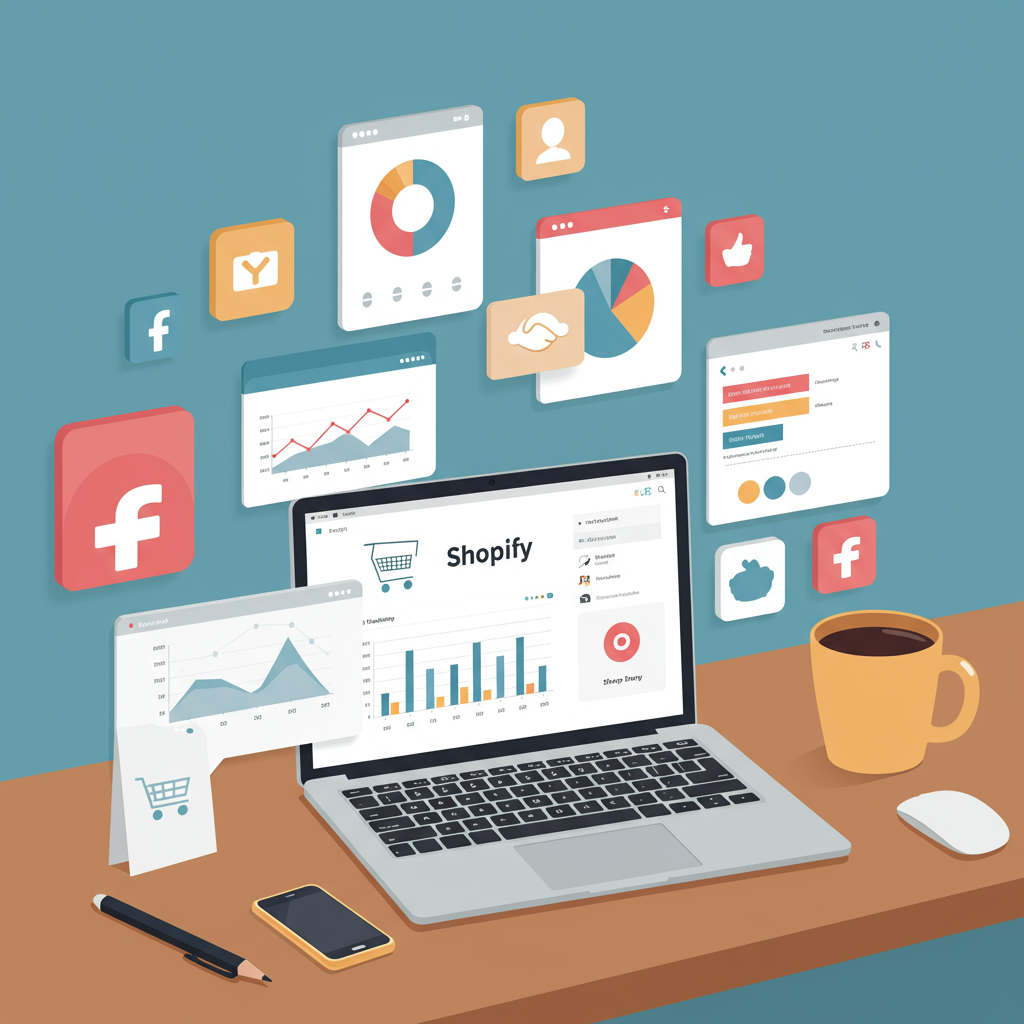Unlock the power of social platforms to drive traffic, engagement, and sales for your e-commerce business.
As a Shopify merchant, you’re constantly looking for ways to grow your business and reach more customers. In today’s digital landscape, social media isn’t just a nice-to-have; it’s an absolute necessity for e-commerce success.
I’ve seen firsthand how powerful social media advertising can be when done right. It’s not just about posting pretty pictures; it’s about strategically connecting with your ideal audience and guiding them directly to your Shopify store.
My goal with this article is to walk you through the essential steps and best practices for leveraging social media advertising to its fullest potential for your Shopify business. We’ll cover everything from understanding your audience to measuring your return on ad spend.
First things first, you need to deeply understand who your customers are. Who are you trying to reach? What are their demographics – age, location, income? More importantly, what are their psychographics – their interests, values, pain points, and online behaviors?
I always recommend creating detailed buyer personas. This isn’t just a theoretical exercise; it helps you tailor your messaging, choose the right platforms, and create ads that truly resonate. If you know their problems, you can present your product as the solution.
Once you know your audience, the next crucial step is choosing the right social media platforms. You don’t need to be everywhere. Instead, focus your efforts where your target audience spends most of their time.
For many Shopify stores, Facebook and Instagram are often the go-to platforms due to their robust advertising tools and vast user bases. However, don’t overlook others like Pinterest, TikTok, or even LinkedIn, depending on your niche.
Now, let’s talk about content – the heart of your social media presence. High-quality visuals are non-negotiable. This means professional product photography, engaging videos, and consistent branding that reflects your Shopify store’s aesthetic.
Beyond visuals, your ad copy needs to be compelling. It should grab attention, highlight benefits, create urgency, and include a clear call to action (CTA) that directs users to your Shopify product pages or collections.
While organic reach is valuable for building community, paid advertising is where you truly scale your efforts. It allows you to precisely target specific audiences and amplify your message far beyond your existing followers.
When setting up your paid campaigns, always start with clear objectives. Are you aiming for brand awareness, traffic to your Shopify store, lead generation, or direct conversions (sales)? Your objective will dictate your campaign structure and bidding strategy.
The targeting options available on platforms like Facebook Ads Manager are incredibly powerful. You can target based on demographics, interests, behaviors, custom audiences (like your existing customer list), and lookalike audiences.
I highly recommend leveraging custom audiences by uploading your Shopify customer list or website visitors. This allows you to retarget people who have already shown interest in your brand, which often yields higher conversion rates.
Budgeting is another key consideration. Start small if you’re new to paid ads, and gradually increase your spend as you see positive results. Monitor your return on ad spend (ROAS) closely to ensure your campaigns are profitable.
Experiment with different ad formats. Image ads are great for showcasing products, carousel ads allow you to feature multiple products or angles, and video ads are excellent for storytelling and demonstrating product use.
For Facebook and Instagram, utilize features like Instagram Shopping and product tagging in posts and stories. This creates a seamless shopping experience, allowing users to click directly from your social content to your Shopify product page.
Consider running dynamic product ads. These ads automatically show products from your Shopify catalog to people who have viewed them on your website or expressed interest in similar items, significantly boosting retargeting efforts.
Pinterest is a visual discovery engine, not just a social network. Focus on creating beautiful, inspiring pins that link directly to your Shopify products. Rich Pins, which pull product information directly from your store, are a must-use.
TikTok has exploded in popularity, especially among younger demographics. If your audience is there, embrace short-form, authentic, and trend-driven video content. Don’t be afraid to be creative and even a little quirky.
Measuring your success is paramount. Integrate your social media ad platforms with your Shopify analytics. Track key performance indicators (KPIs) like click-through rate (CTR), cost per click (CPC), conversion rate, and most importantly, ROAS.
I always advise A/B testing everything. Test different ad creatives, headlines, calls to action, and even audience segments. Small tweaks can lead to significant improvements in your campaign performance over time.
Don’t forget the power of retargeting. People often need multiple touchpoints before making a purchase. Set up campaigns to show ads to users who visited your Shopify store but didn’t complete a purchase, or those who added items to their cart.
Encourage user-generated content (UGC). When customers share photos or videos of your products, it builds trust and provides authentic social proof. Consider running contests or campaigns to incentivize UGC.
Finally, remember that consistency and patience are key. Social media advertising is a long-term game. You won’t see overnight miracles, but with persistent effort, optimization, and a data-driven approach, you will see growth.
What do you think about this article? I’d love to hear your thoughts and any strategies you’ve found particularly effective for your Shopify store.
By implementing these strategies, you’ll be well on your way to transforming your social media presence into a powerful sales engine for your Shopify business. Keep learning, keep testing, and keep growing!






